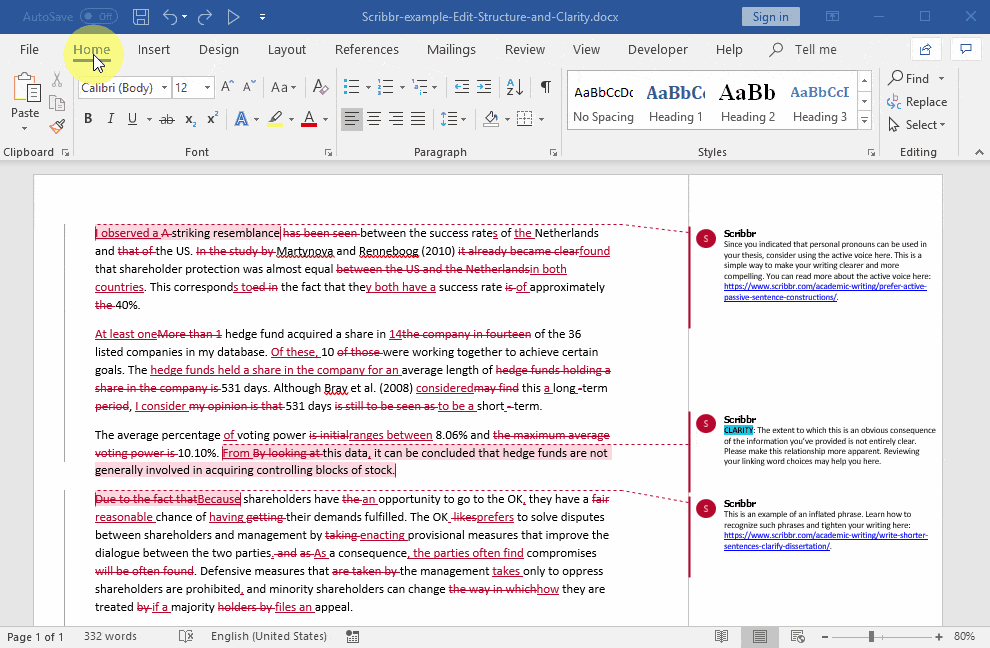
I immediately went back to my desk, opened the document, ensured that ‘accept all changes’ had been done, re-saved the document and emailed it again… only to see that a red-lined version was again open on her desktop. I looked at her screen and indeed - what was displaying was the ‘tracked changes’ version. She said to me: “Why did you send me a version still showing all the tracked changes? I thought you were sending out a clean copy?” saved it… and sent the ‘clean copy’ to my collaborating colleagues - one of which was just down the hall. Just the other day I finished collaborating on a Word document… accepted all changes…. By way of further security, we can use a metadata removal tool (such as Payne Consulting’s Metadata Assistant) or by converting the Word document to a PDF. Speaking for myself, the way that I usually do this is by clicking on ‘accept all changes’ – and then saving the document – thinking that this turned off track changes and revered the document to an ordinary Word document. Once that process is over, the typical next step is to agree to the changes in the document to produce a non-red-lined version ( or ‘clean copy’) as it is known. Most of us use “Track Changes” in Microsoft Word when working on a document to note the changes/additions/deletions done by others. Lawyers today are concerned about metadata and not transmitting same to another lawyer or their own client when they electronically send a document. Lyrics by Francis Scott Key (who was a lawyer), music by John Stafford Smith.
Word for mac accept all changes pdf#
Use the export button to take the file out in either Word or PDF formate, or use the share button to share the file using a direct link, email or any cloud sharing system such as Dropbox, GoogleDrive, OneDrive and Sharepoint.♫ Oh say can you see by the dawn’s early light…♫

You can easily export or share your document directly from Simul Docs. So you’ve finished collaborating and you now have a final version. You also won’t accidentally save over an old version without realising. With Simul managing version control for you, you will never have to search through a long list of documents and crazy file names again to find the latest version. The way you’ve always dreamt it would be done. Then you jump back in and add a few extra pieces of information, this version is automatically saved as version 0.0.3. Someone else opens version 0.0.1 and makes a few minor changes and without this author having to think about pressing save, or coming up with a new file name, Simul has automatically saved the document for them and called it version 0.0.2. When working in Simul you own the first draft, Simul would call this version 0.0.1. Simul makes version control easy and fool proof, like it should be. Removing the variable of individual decisions or file name preferences, Simul will automatically save a document under a new name when a change is made. Numerical file names is the best way to manage version control, you’ve been using some form of this method for a while now. With so many of us facing the same frustrations when collaborating in Microsoft Word, it’s no surprise that there are now some amazing purpose-built tools on the market that are here to make version control easy. The only way to find the latest version now is to look at the most recently updated file, cross your fingers and hope you have just opened the correct version. Your file name ends up being so long that you can’t read it without expanding the size of your documents window, or someone places the word _final at the end of your document prematurely leaving you with something along the lines of document_v18.2_final_v4 and so on. Too often, these methods just don’t work. These methods do work, if your team are all following the same version control system and no two people are working on the document simultaneously, leaving you with two different versions of report_v18. Inserting your initials, or your initials and the date at the end of the document. There are a number of commonly used methods to manage version control, such as adding version numbers or dates to the end of the document name. When you are collaborating with more than one other person on a Microsoft Word document keeping track of every version is often harder than it needs to be.

Looking for a better way to manage version control? After you have accepted all changes shown, you can review the remaining comment, ink and insertion/deletion mark-ups by re-ticking them as you did back in step 5 above.


 0 kommentar(er)
0 kommentar(er)
